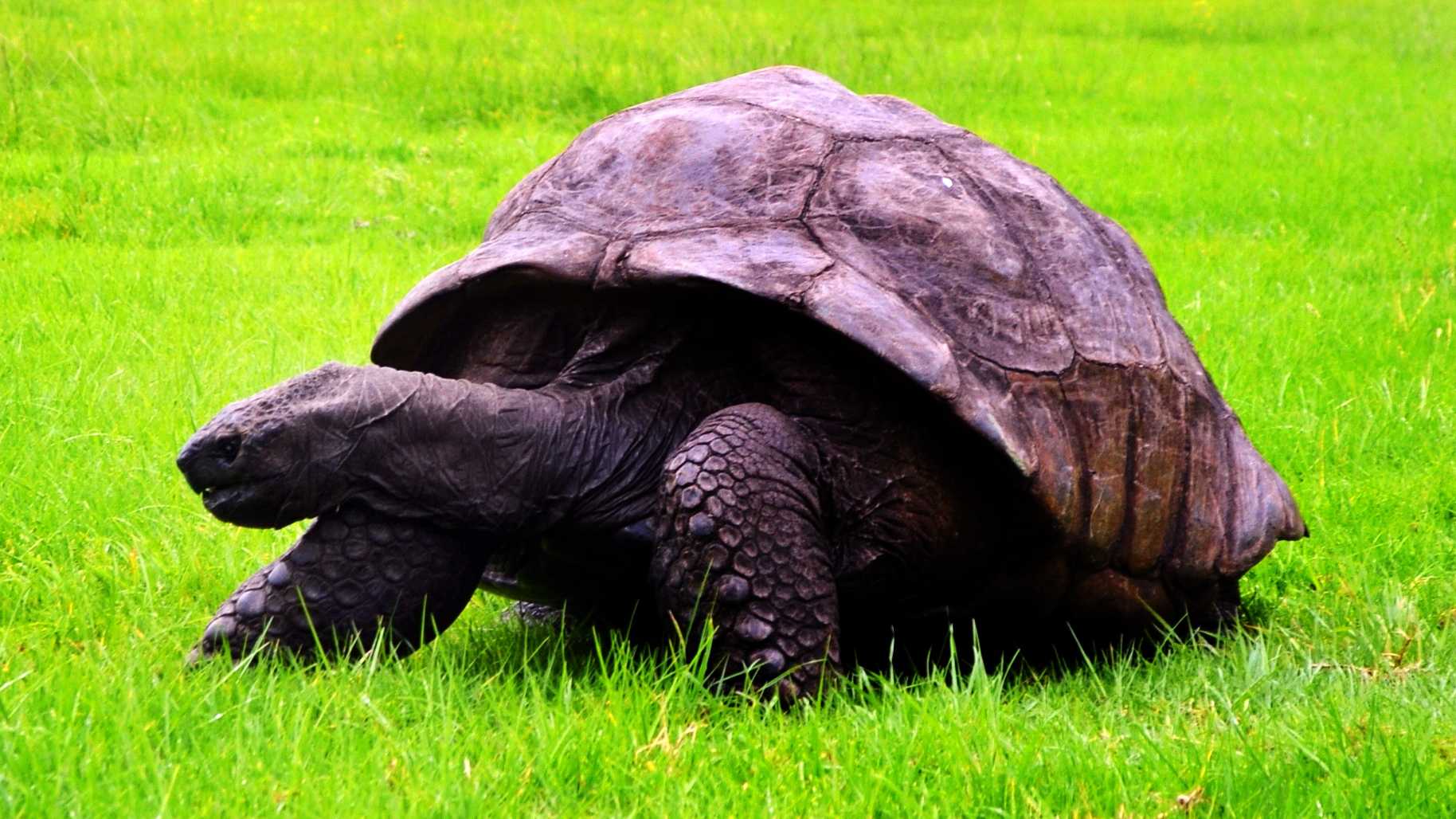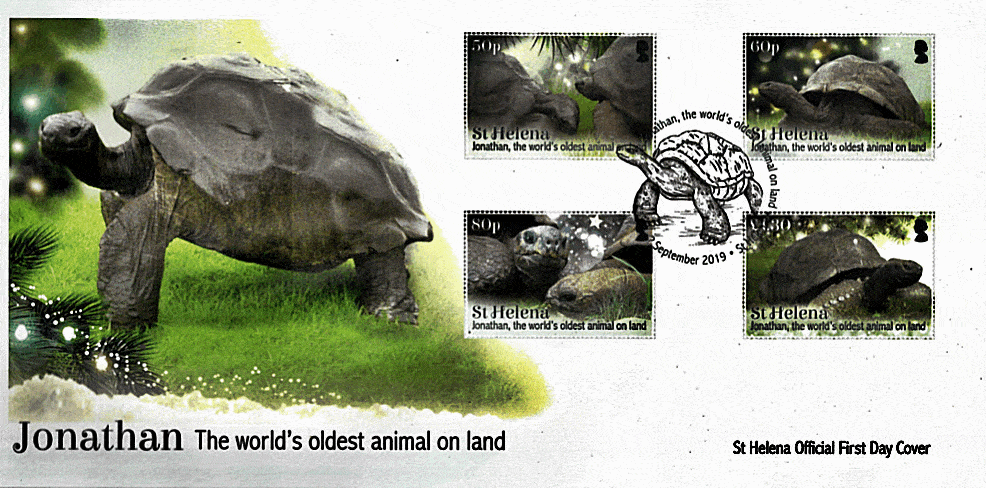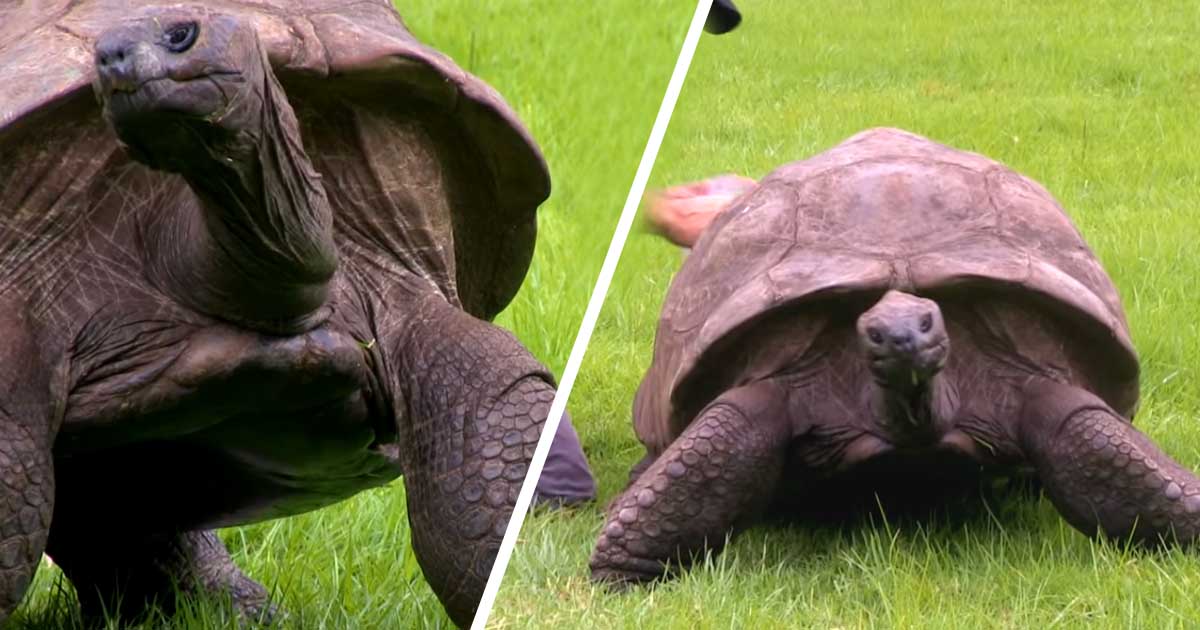As slow pace it may seem, this land critter has seen generations come and go, eras change and hours passed by. With wars ending, technology evolving, and government reforming, it’s funny to imagine how this single creature alone witnessed recurring events in its over-a-century lifespan. But just as change is the only thing constant on earth, so is this tortoise’s constant crawling over this ever-changing world.

Giant Tortoise Jonathan
Jonathan, a type of Seychelles giant tortoise (Aldabrachelys gigantea hololissa) is the renowned oldest terrestrial animal in the world. It hatched way back in 1832 and now resides in St. Helena Plantation House.
By now, Jonathan is only a year away from obtaining another world title known as the “Oldest Chelonian Ever” preceded by Tu’i Malila, a radiated tortoise aging 188 years old. Jonathan’s species only has a 150-year-old average life expectancy, but caretakers say he has several years more to live due to his healthy appetite and good libido. This youthfulness indicates an extended lifespan for Jonathan.
Though Jonathan retains his healthy condition, he is visually blind because of cataracts. He has also lost all his sense of smell. Considering those, he still has a great sense of hearing which helps him get by.
Longevity Secret
His diet includes lettuce hearts, cucumber apples, and bananas as snacks but consuming Monkey’s Ears (Centella Asiatica), which are common herbs in his area, may have also contributed to his longevity. Cited by a naturalist Dr. Rebecca Cairns-Wicks, Monkey’s Ears contain rejuvenating diuretic herb which detoxifies, reduces inflammation and fever, boosts immunity, and ability to self-heal. These herbs are also famous in China for making tea that extends their lifespan.
There were also times when Jonathan had problems feeding which greatly affected his health. His inability to scythe grass due to blunt beaks made his caretakers develop a new feeding routine. A once-a-week high-calorie feeding brought significant change to his situation. A rack of micro-deficiencies and minerals received from his current diet enabled him once again to graze on grass again.
Jonathan’s variety was once mistaken as Testudinipae Cytodira instead of Aldabrachelys gigantea hololissa for it was once stated that these species were extinct. The latter was then proven back in 2009 when Dr. Hollins, a veterinarian, noticed that Jonathan’s anal scut is undivided, thus confirming that his breed is much rarer than identified.
Symbol of Persistence
This living time machine became famous enough to be imprinted on St. Helena’s local 5-pence coin. He also became one of the country’s national symbols. He then got the media’s attention in 2008 for being with a Boer prisoner and his escort which turned out to be the picture when Jonathan shortly landed in St. Helena way back in 1880’s.
Considering his age, Jonathan’s routine is as youthful as it seems. According to Dr. Hollins, he still is very relaxed. On days when the temperature is high, he enjoys the sun while being under the shade. On days when the weather is mild, he sunbathes, stretches his flippers, and elongates his neck letting his shell absorb the heat for him. In winter, he digs leaf and grass clippings and stays there.
Jonathan, having to pass by special events that were engraved into the history of the world during his lifetime may not have affected him severely. But in the modern world where Jonathan still lives in, he carries a time-driven memento on his old shell and body.
St. Helena’s Old Treasure
Jonathan did not live in this world completely unscathed. He had his fair share of hardships while creating a safe space for himself. But him reaching a century old could have not been completely possible if not for the continuous care of the locals in St. Helena. Having a now-fragile piece of a time capsule is indeed a great privilege, but also a great challenge.
The locals hold a special place for Jonathan in their hearts, making him their personal symbol of persistence and the face of change.
This form of mutualism shared between the tortoise and the country is what makes St. Helena, St. Helena. The country, without their famous symbol inviting tourists and media, will probably have it hard for their economic status to rise. On the other hand, a rare tortoise like Jonathan receiving no care from countrymen while enduring stressful events in the world will probably cease to exist.



















